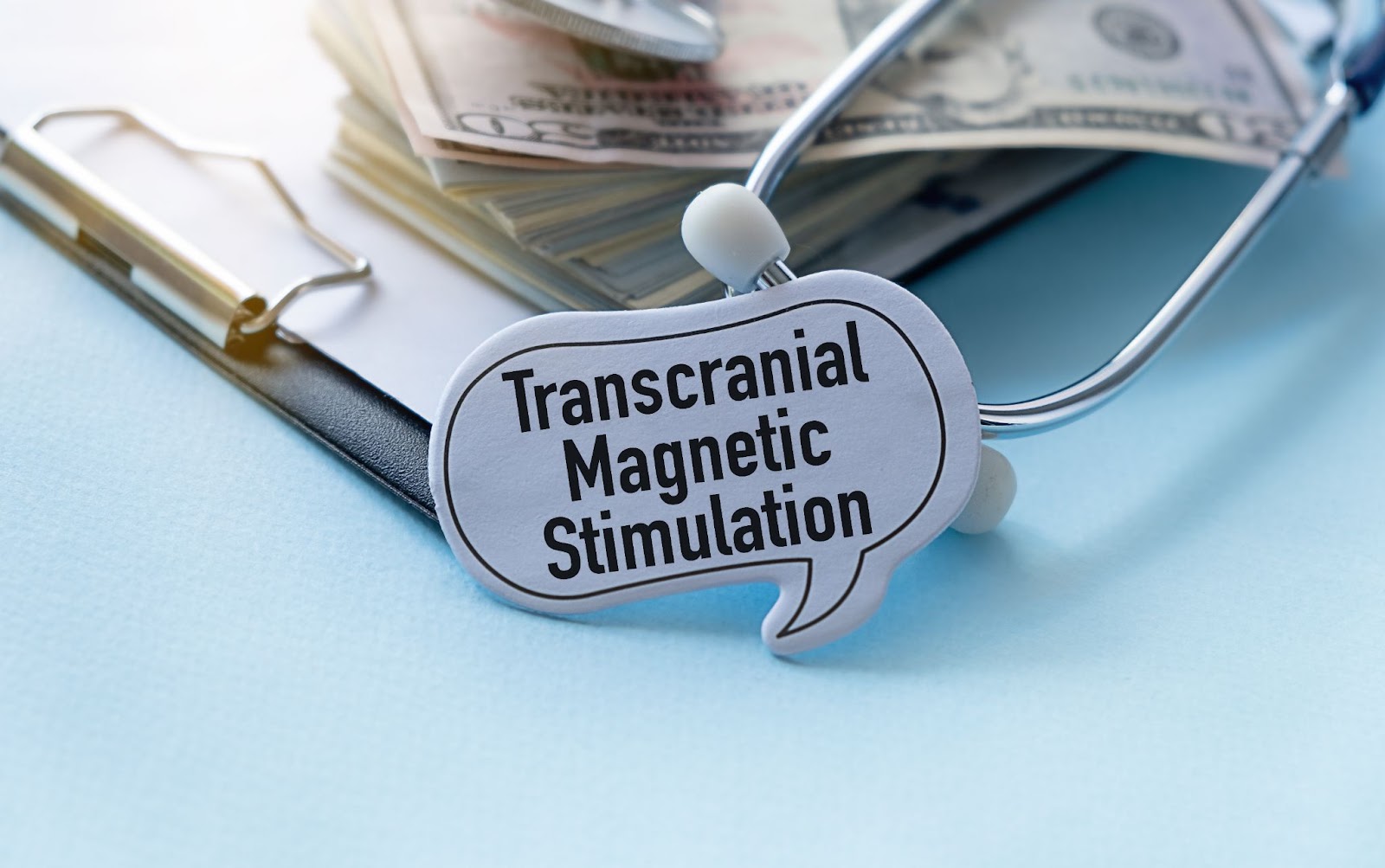Today, we’re diving deep into the fascinating world of TMS therapy, especially as it relates to tackling anxiety. If you’ve ever felt the grip of anxiety tighten around your daily life, you know it’s more than a case of nerves.
It’s often overwhelming, paralyzing, and downright exhausting. But what if I told you there’s a cutting-edge, science-backed treatment that’s gaining ground for its effectiveness in soothing the storm of anxiety? Enter TMS, or Transcranial Magnetic Stimulation.
In this blog, we’re unraveling the science behind TMS therapy for anxiety. We’ll explore what anxiety disorders really entail, beyond the common misconceptions, and how they can turn life into an uphill battle. Then, we’ll introduce you to the world of TMS therapy, breaking down how it works, why it’s a game-changer for many, and what you can expect from this treatment.
But we’re not stopping there. We’ll also discuss the potential benefits and limitations of TMS, giving you a well-rounded view.
So, whether you’re seeking new avenues to manage anxiety or are curious about the latest advancements in mental health treatments, stick around. We’re about to embark on an enlightening journey through the science and promise of TMS for anxiety. Let’s get started!
Understanding anxiety disorders
Picture this: your brain is constantly sending false alarms, making you feel like something’s wrong even when everything is actually okay. That’s the core of anxiety disorders. It’s not merely the everyday worries or nerves; it’s more intense and persistent and usually doesn’t have a clear cause.
Generalized Anxiety Disorder
First up, we’ve got Generalized Anxiety Disorder, or GAD. Imagine your mind is like a worry machine that can’t seem to switch off. People with GAD feel anxious about a bunch of things most days, and it’s hard for them to control this feeling. It’s like their brain is constantly on ‘high alert’ mode, making them expect the worst.
Panic Disorder
Then there’s Panic Disorder. This one’s a bit like having a faulty alarm system that goes off at random. People experience sudden, intense panic attacks that can feel like a heart attack — racing heart, sweating, shaking, you name it.
The fear of having another panic attack often becomes a fear in itself, making them avoid places or situations where they’ve panicked before.
Social Anxiety Disorder
Social Anxiety Disorder is another common one. It’s like having an intense fear of being judged or embarrassed in social situations. It’s not mere shyness; we’re talking about a fear so strong that it gets in the way of everyday activities. People might avoid social gatherings, feel nauseous or overly self-conscious when around others, or struggle with speaking in public.
These disorders can really turn someone’s life upside down. They might pull back from activities they enjoy, struggle at work or school, or have a hard time maintaining relationships. It’s like carrying an invisible weight that makes everything seem more difficult.
But here’s the thing: these disorders are treatable. With the right help, people can learn to manage their symptoms and reclaim their lives. It’s about understanding what’s happening and finding the right strategies to cope with those false alarms the brain keeps sending.
The basics of TMS therapy
TMS stands for Transcranial Magnetic Stimulation. Imagine it like a highly focused, magnetic version of a gentle nudge to your brain to help it find its rhythm again, especially in areas linked to mood and anxiety.
Here’s the lowdown: in TMS, we use a device that generates magnetic pulses. We place it on specific spots on your scalp, targeting areas of your brain that we know are involved in mood regulation. These magnetic pulses pass through your skull — no pain, no need for surgery — and stimulate the brain cells underneath.
Think of it like rebooting a computer that’s been glitching. For reasons we’re still fully getting to grips with, stimulating these brain cells helps reset the brain’s activity patterns in people with depression, anxiety, and a few other conditions. It’s non-invasive, you don’t need anesthesia, and you can pretty much go about your day right after a session.
The whole thing is based on the principles of neuroplasticity — that’s the brain’s ability to change and adapt. By targeting these specific areas, we’re encouraging the brain to ‘rewire’ itself in a more functional way. It’s like guiding a stream to flow in a more beneficial direction.
TMS has been around for a while, but it’s really come into its own in the last few years, especially for treating depression and now increasingly for conditions like anxiety and OCD.
It’s not a magic bullet, but for folks who haven’t had much luck with traditional treatments like medication or therapy, it can be a game-changer. Plus, the side effects are typically pretty minimal — maybe a bit of scalp discomfort or a mild headache right after the treatment.
So, in a nutshell, TMS therapy is this cool blend of neuroscience and technology, offering new hope for treating some pretty tough conditions. It’s like having a new tool in the mental health toolkit that’s both sophisticated and user-friendly.
The TMS treatment process for anxiety
So, you’ve decided to give TMS a shot for managing anxiety.
The first thing you’ll do is sit down with a specialist for an initial evaluation. They’re going to want to get the full picture: your medical history, what treatments you’ve tried, and how anxiety is affecting your life. It’s a bit like the detailed chat you’d have with a mechanic about your car before they start working on it.
Once you’re all set to start, here’s what a typical TMS session looks like:
- Getting comfortable: You’ll be sitting in a comfortable, reclining chair, kind of like at the dentist’s, but way more relaxing. No need for any anesthesia or sedation; you’re fully awake and alert.
- Fitting the coil: The TMS technician will place a magnetic coil against your head. It’s specifically positioned to target areas of your brain involved in anxiety. The coil might look a bit sci-fi, but it’s the device that delivers those magnetic pulses. No need to worry about it.
- The treatment: When the session starts, you’ll feel a tapping sensation on your scalp and hear a clicking sound as the coil delivers the magnetic pulses. It’s not painful, but it might feel a bit odd at first. Some folks say it’s like a woodpecker gently tapping on your head. The session length varies based on the type of TMS you do.
- During the session: You can relax, listen to music, or chill during the treatment. The technician is right there with you the whole time, so if anything feels off, you can let them know.
- After the session: Once it’s done, you can pretty much get up and go about your day. There’s no downtime needed, which is super convenient. Some people might have a mild headache or some scalp discomfort afterward, but this usually eases off pretty quickly.
As for the treatment schedule, it usually involves sessions five days a week for 4-6 weeks, but this can vary based on your specific needs and how you’re responding to the treatment.
The cool part is, over time, these sessions can help “retrain” your brain, reducing anxiety symptoms. It’s a bit like physical therapy for your brain, gradually helping it adopt healthier patterns of activity.
So, in a nutshell, TMS therapy for anxiety is a pretty straightforward process. It’s non-invasive, doesn’t take too long, and you can get back to your life right after each session. Plus, it has the potential to make a big difference in managing anxiety. It’s like having a new tool in your toolkit for tackling those anxious thoughts and feelings.
Potential benefits and limitations of TMX for anxiety
Let’s chat about the ups and downs of using TMS for anxiety, kind of like weighing the pros and cons of a new gadget.
Benefits of TMS for anxiety
- Non-invasive: One of the coolest things about TMS is that it’s non-invasive. You sit in a chair, and the machine does its thing. It’s that simple. It’s pretty hassle-free, which is a big plus.
- Minimal side effects: Compared to some anxiety medications, TMS has relatively few side effects. You might get a mild headache or some scalp discomfort after the session, but that’s usually about it. It’s like getting a bit sore after a workout – uncomfortable, maybe, but nothing too serious.
- No medication involved: If you’re not keen on taking meds or you’re tired of juggling side effects, TMS offers an alternative route. It’s like choosing a natural remedy over a pharmaceutical one.
- Targeted treatment: TMS lets us target specific areas of the brain involved in anxiety. It’s not a blanket approach; it’s more like using a precision tool to fine-tune the parts that need adjusting.
- Potential for lasting relief: For some folks, TMS provides relief from anxiety symptoms even after the treatment sessions are over. It’s like planting a garden — you do the work upfront, and then you get to enjoy the blooms that follow.
Limitations of TMS for anxiety
- Accessibility: TMS isn’t available everywhere, and finding a clinic or a specialist might be a bit of a hunt, depending on where you live.
- Time commitment: TMS requires a pretty solid time commitment – usually sessions five days a week for several weeks. It’s like signing up for a course; you need to be able to fit it into your schedule.
- Not a guaranteed fix: Like any treatment, TMS isn’t a surefire cure. It works wonders for some people, but not everyone gets the same level of relief. It’s a bit like trying a new diet or workout regimen — results may vary.
- Insurance coverage: The cost of TMS can be a hurdle, and insurance coverage is a bit hit or miss. It’s worth checking with your provider, but be prepared for some legwork to figure out the financials.
- Not suitable for everyone: Certain conditions, like having metal implants in your head or certain types of medical devices, can rule out TMS as an option. It’s like having a food allergy — you have to make sure it’s safe for you.
So, there you have it — the pros and cons of TMS for anxiety. It’s an exciting option with lots of potential, especially if traditional treatments haven’t quite hit the mark for you. But like any treatment, it’s about weighing the benefits against the limitations and seeing if it fits your needs and lifestyle.
Try TMS therapy for anxiety at Brain Health Center
Feeling inspired and curious about how TMS therapy could help ease your anxiety? If the idea of a non-invasive, science-backed treatment resonates with you, it might be time to explore TMS therapy further, and there’s no better place to start than at Brain Health Center.
At Brain Health Center, we’re dedicated to providing compassionate, cutting-edge care tailored to your unique needs. Our team of experts is here to guide you through every step of the TMS therapy process, ensuring you feel supported, informed, and hopeful about your journey towards managing anxiety.
Don’t let anxiety hold you back from living the life you deserve. Reach out to us at Brain Health Center and schedule your consultation today. It’s an opportunity to ask questions, learn more about how TMS therapy works, and discover if it’s the right fit for you. We believe in a holistic approach to mental health, and we’re committed to finding the best solutions for our patients.
Take that brave first step towards a calmer, more balanced life. Contact Brain Health Center, and let’s explore together how TMS therapy can be part of your path to managing anxiety. Remember, reaching out for help is a sign of strength, and we’re here to support you every step of the way. Your journey to wellness starts here.




